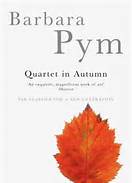I recently read a review of the novelist Barbara Pym’s life. Pym, writing in the middle of the twentieth century, wrote gentle stories of ordinary people coping with life.
Pym’s books sold well enough until the mid-sixties. Then, as she said, rather than the ordinary lives she wrote about, writers turned to juicier subjects. Her novels, which she continued to write, were rejected for the next fourteen years.
In 1977 she returned to popularity. Her Quartet in Autumn (previously rejected several times) was shortlisted for the Booker Prize.
Advice to writers these days emphasizes suspense. We must hook the reader from the first sentence and the first paragraph and in every scene thereafter. This is good advice if not taken too narrowly, else we end up refusing to write anything except murder and mayhem.
I enjoy a good mystery, even an occasional dead body, but I’m especially taken with a mystery like Gaudy Night by Dorothy Sayers. People are murdered in other Peter Whimsey stories, but Gaudy Night is a story of relationships and gray areas of right and wrong.
I have found that with most suspense novels, I’m now apt to skim, even skip, large sections in order to satisfy my curiosity about the end. Having finished, I rarely ponder them. My preference is increasingly for quiet writing, something to savor instead of hurry through. A desire for slow food versus fast food for those in the fast lane.


